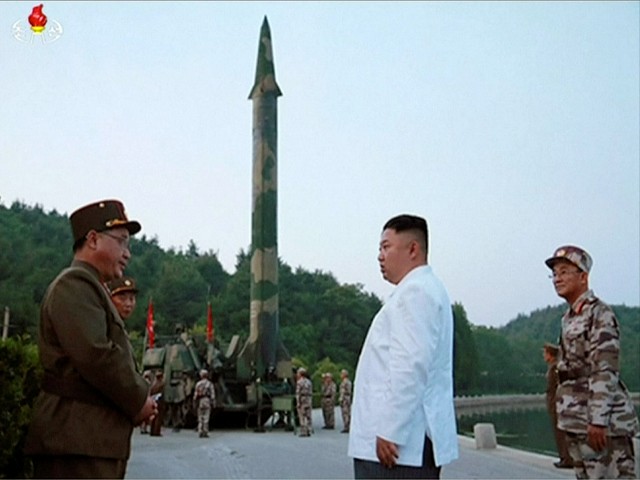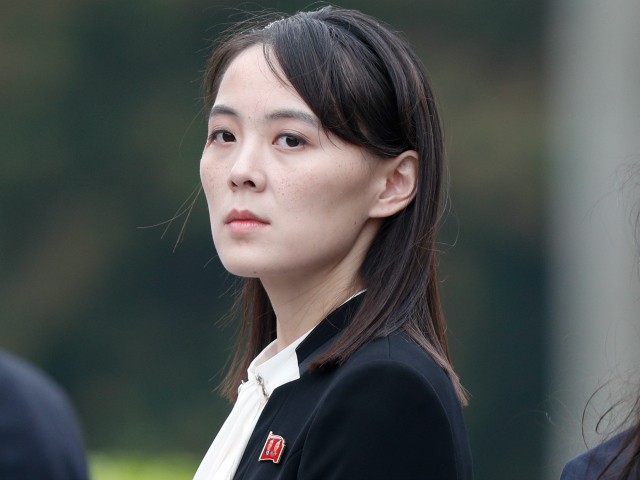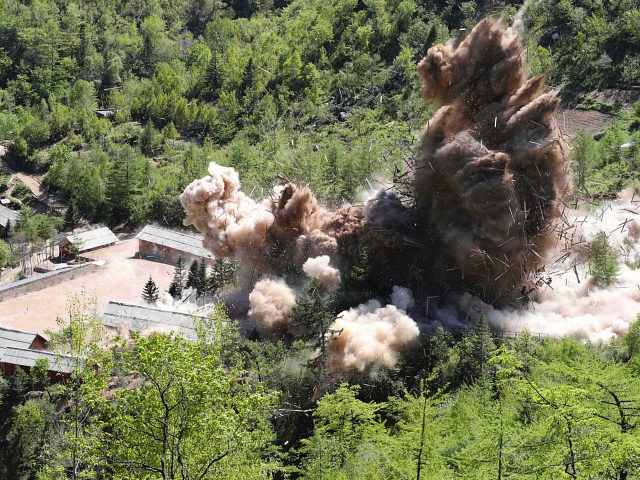Communist North Korea may be rehabilitating the Punggye-ri former nuclear test site, the South Korean news agency Yonhap reported Friday, citing satellite images showing activity at the location.
Punggye-ri, located on Mount Mantap in the north of the country, hosted all six of North Korea’s known nuclear tests. After the most recent one in 2017, negotiations with the United States resulted in the communist regime claiming that it would shut down the site. After scamming international journalists into paying $10,000 for the luxury of covering the event, Pyongyang staged a flashy “demolition” of the nuclear test site in 2018. Journalists were only invited to witness an explosion at the entrance to one of four known tunnels at the site.
Yonhap, citing satellite images from Austria’s Open Nuclear Network, reported on Friday that the images appear to show the construction of a new tunnel entrance.
“The DPRK likely established a preliminary entrance to Tunnel 3 and started excavation of the tunnel structure,” the Open Nuclear Network report read in part. The report Yonhap based itself on was published on Wednesday.
“On 28 March 2022, ONN reported signs of increasing activities within the Punggye-ri nuclear weapon test site of the Democratic People’s Republic of Korea (DPRK), especially at Tunnel 3 (also known as the South Portal),” the report explained. “Since then, available satellite images have shown continuing developments at this location, including clear indications of a newly uncovered tunnel entrance and new spoil piles, and further signs of vehicle traffic. These signs indicate that the excavation of Tunnel 3 has been steadily proceeding.”
The North Korea monitoring site 38 North reported similarly last week that satellite images indicated “new excavation activity” at Punggye-ri, citing “snow patterns” showing significant vehicle traffic in the area and a “new spoil pile.”
“What appears to be a new spoil pile has formed across from the Tunnel No. 3 complex … leading to an area just east of the former tunnel entrance that was exploded as part of site dismantlement efforts in 2018,” 38 North observed. “While some reports have suggested North Korea is trying to build a shortcut to these test tunnels, it seems more likely it has chosen to excavate into a stable point rather than digging through the fractured rock around the former entrance.”

A guard stands at the entrance of the north tunnel at North Korea’s nuclear test site shortly before it was to be blown up in a media tour of dismantling the test site, at Punggye-ri, North Hamgyong Province, North Korea, Thursday, May 24, 2018. (AP Photo/Rafael Wober)
The outlet described the images as showing “probably excavation activity.”

This image made from video of an undated still image broadcasted in a news bulletin on Tuesday, May 30, 2017, by North Korea’s KRT shows North Korean leader Kim Jong Un and a missile launcher in North Korea. (KRT via AP Video)
The new evidence surfacing this week poses a more urgent threat to South Korea and the international community in light of remarks by Kim Yo-jong, the sister of communist dictator Kim Jong-un, threatening a nuclear attack on South Korea this week. Kim Yo-jong issued her statements through North Korean state media and claimed them to be a response to a routine South Korean military update in which the nation’s defense minister expressed confidence that the country could thwart an attack from the North.

Kim Yo Jong, sister of North Korea’s leader Kim Jong Un, attends wreath laying ceremony at Ho Chi Minh Mausoleum in Hanoi, March 2, 2019. (JORGE SILVA/AFP via Getty Images)
“In case [South Korea] opts for military confrontation with us, our nuclear combat force will have to inevitably carry out its duty,” Kim’s statement read in part. “A dreadful attack will be launched and the [South Korean] army will have to face a miserable fate little short of total destruction and ruin.”
Kim added that Pyongyang would “not fire even a single bullet or shell toward South Korea” if unchallenged “because we do not regard it as a match for our armed forces.”
Prior to the clear threat of nuclear attack, Kim Yo-jong published another statement calling Defense Minister Suh Wook a “scum-like guy” and “confrontation maniac engrossed in the mindset of confrontation.”
Yoon Suk-yeol, the president-elect of South Korea who will take office in May, is reportedly planning to bring Seoul closer to the United States and request “strategic assets” to protect against a North Korean attack, a pivot way from the policies of incumbent leftist President Moon Jae-in. Yoon sent a delegation to meet with American National Security Adviser Jake Sullivan this week that reportedly requested such assets, a term South Korean typically uses to mean heavier-duty, long-range weaponry.
America’s Special Representative for North Korea Sung Kim told reporters this week that he believes another nuclear test in the North, the first since 2017, is possible in the near future.
“In terms of the upcoming anniversary and the provocation – provocative actions the DPRK [North Korea] may take, I don’t want to speculate too much, but I think it could be another missile launch, it could be a nuclear test,” Kim said, according to South Korea’s JoongAng Ilbo. “The important thing is that we, in cooperation and coordination with our allies and partners, are prepared to deal with whatever they may undertake.”

COMMENTS
Please let us know if you're having issues with commenting.